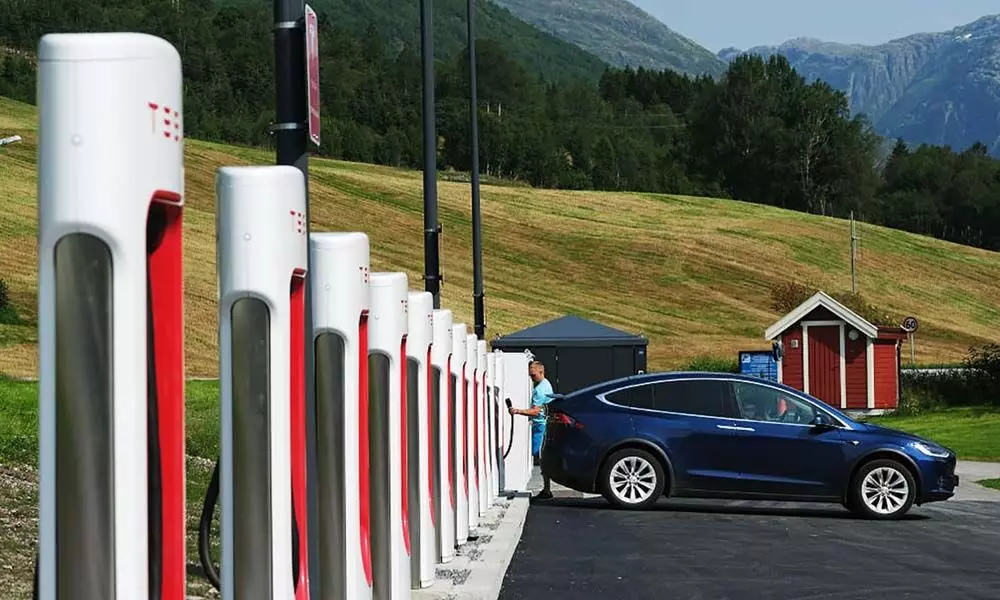How battery science not matching the reality
The reality is, these powertrains are highly complex. Even as some promising advances are made, commercial viability remains a stumbling block. Chief among those hurdles is boosting energy density and along with it, safety
image for illustrative purpose

The technical challenges of making better batteries are enormous and the expectations associated with them are even more fantastical
With billions of dollars flowing to electric cars, investors are eagerly waiting for the next breakthrough in battery technology - one that will underpin the future adoption of green vehicles.
They may be waiting a while: The technical challenges of making better batteries (and therefore, electric vehicles) are enormous and the expectations associated with them are even more fantastical.
Such disproportionate enthusiasm is misplaced. Battery costs, which make up almost half the expense of an electric car, have come down, while their energy density has gone up, meaning vehicles can go further. Government subsidies are helping too. Despite these improvements, we are nowhere near the affordability, guaranteed safety or optimistic forecasts of years past. In fact, installations of older battery technologies that are safer and cheaper are rising as carmakers try to keep up with the hype.
It's clear the path to better batteries is far tougher and longer than all the rosy estimates.
Technology has been forced to chase investors' expectations. In China, the world's largest market for electric cars where sales are growing steadily, battery installations of so-called lithium iron phosphate, or LFP, batteries - the technology of the last decade - accounted for 38 per cent of the market, up from 33 per cent the year before. Such batteries lag behind newer ones by as much as 30 per cent in terms of energy density.
The reality is, these powertrains are highly complex. Even as some promising advances are made, commercial viability remains a stumbling block. Chief among those hurdles is boosting energy density and along with it, safety. The more energy a battery has, the further a car can go. However, that also hastens the pace of degradation and shortens battery life. Several higher-density batteries don't have stable chemical compositions either, leaving them dangerously vulnerable to combustion.
To get over such challenges, firms are trying to make solid-state batteries that will be safer and, eventually, cheaper. Others are intent on boosting battery density by using more nickel content, and less cobalt, which is expensive and mired in supply issues. The progress so far has been limited. Investors and analysts, meanwhile, are honing in the improvements on to individual battery parts, like cathodes and anodes.
The flipside of these advances are often overlooked. For instance, solid-state batteries that can store more have low power density, which means their energy delivery is slow, while those with higher nickel content are less chemically stable. In addition, solid state batteries have been known to discharge sulphides.
Take QuantumScape Corp, a startup that counts Volkswagen AG and Soros Fund Management LLC among its backers. It's trying to make safer and eventually cheaper solid-state lithium-metal batteries and recently flagged it had made a technical breakthrough. However, to produce en masse and have a market, it still needs to deal with issues including how to manufacture larger, multi-layered batteries outside a controlled laboratory setting. It posted a $1.1 billion net loss in 2020 and is targeting first commercial production in 2024.
Part of the problem is, car companies are fueling the hype. China's Nio Inc., for instance, said in January it would launch production-ready solid state batteries with greater density and range of more than 1,000 kilometers (621 miles) by the end of next year. Considering where QuantumScape and others are, that's optimistic. Meanwhile, Nio has returned to batteries with less nickel content because of "performance and cost considerations," Goldman Sachs Group Inc. analysts noted recently.
Even though battery prices have edged down, costs are still high. Companies are trying to raise production and capacity. That's meant more invested capital. However, total capital expenditure on the global electric vehicle lithium battery market has been getting less efficient, measured on a dollars per kilowatt hour basis. Surging prices of key battery commodities like nickel, lithium and cobalt hasn't helped lower development costs either.
With all the advances and new electric car models coming to market, there's also safety to consider. Cars are literally catching on fire.
Since launching in 2018, Hyundai Motor Co. has reported several blazes in its Kona electric vehicle related to the battery and previously recalled some of the cars to do a system update. But even those caught alight and now the company will replace battery systems in thousands of the model. Tesla Inc. has had battery fire issues in China, although its battery maker said it had nothing to do with it.
Underneath all the valuation froth, it's probably a good time to take stock of where battery technology stands. (Bloomberg)

